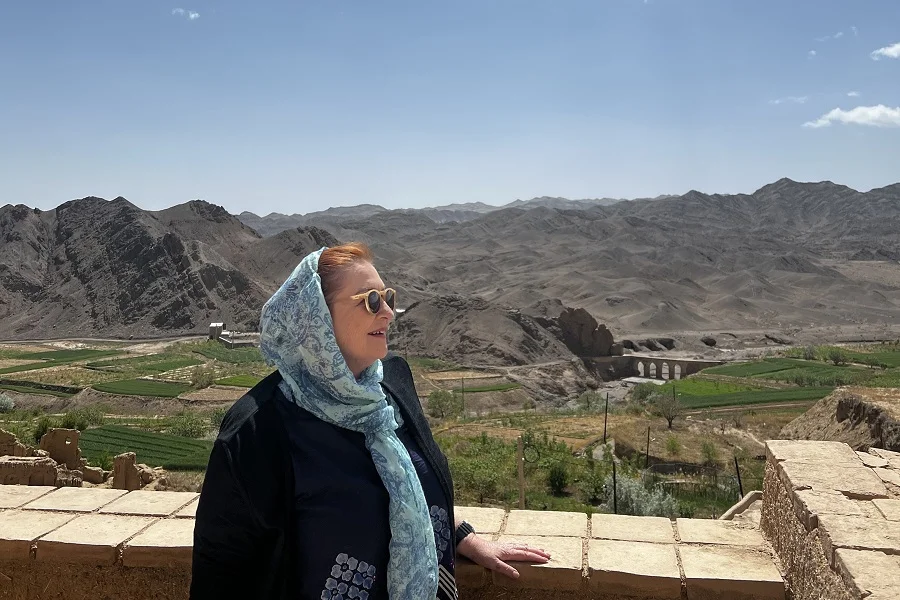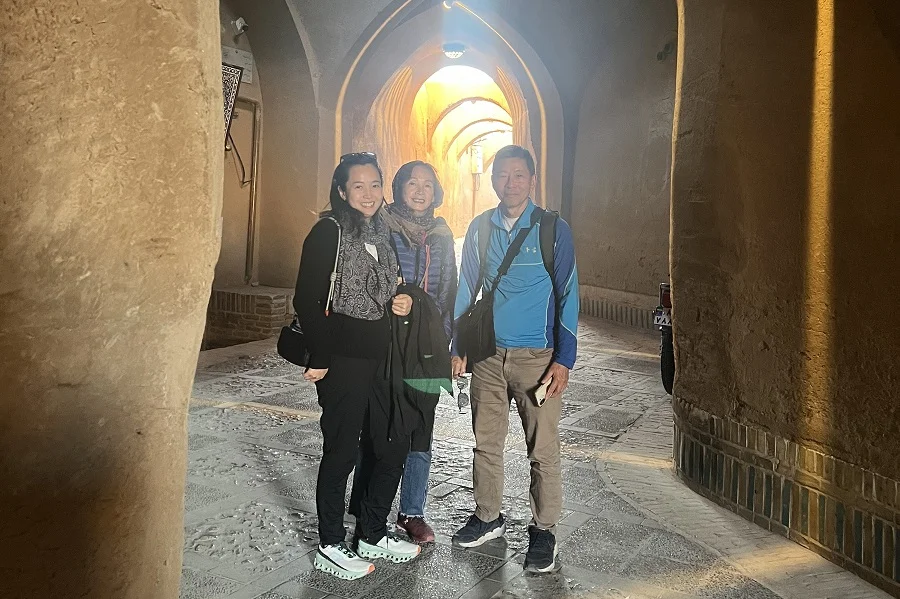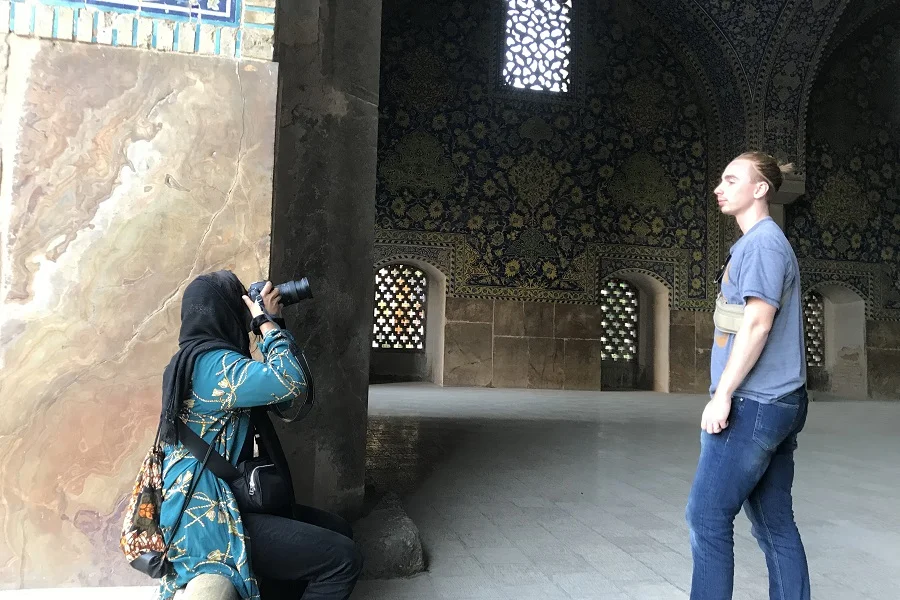
How to travel to Iran in 2025
Iran is a country of four seasons, where you can ski on snowy slopes in the north, wander through blooming gardens in spring, or relax on sunny southern beaches in winter. Along the way, you’ll taste some of the world’s most flavorful cuisine: saffron rice, fragrant stews, fresh pomegranates, and discover handicrafts so beautiful they’ve been perfected over centuries. If this sounds like your kind of adventure, here’s a friendly guide to help you plan your journey to Iran
Step 1: Visa and Entry Requirements (Update: August 2025)
Traveling to Iran has recently become more structured, and it all starts with the visa. At the moment, there are two categories of travelers: some nationalities can enter visa-free, while others need to apply for a visa.
According to the latest update in August 2025, anyone who requires a visa must also book a pre-arranged tour with a licensed Iranian travel agency. Independent travel is no longer allowed, and visas are only issued when the traveler is accompanied by a certified local guide.
This new rule also connects directly with flights and hotels: when submitting your visa application, you are required to provide details of your intended flights and accommodation. This means you need to choose your travel dates, flights, and hotel options in advance, even if some are only reserved rather than fully paid for.
While this may sound restrictive at first, it actually makes the process smoother and less stressful. Travelers no longer need to worry about navigating everything alone, and there’s no need to fear the cost of pre-arranged tours. Packages now cover all ranges, from budget-friendly trips to mid-range comfort tours and luxurious journeys—so there’s always an option that fits different styles and wallets.
To keep things simple and avoid delays, it’s best to book your trip directly with an authorized agency like Tours of Iran, where you can choose a package, confirm your travel details, and have your visa processed without complications. On average, visas take about two weeks to be issued.
For full details and step-by-step instructions, you can read the complete guide HERE

Step 2: Booking Your Flights and Arrival in Iran
Once your visa process is underway, the next step is finalizing your flights. Since the new regulations require travelers to mention their intended flights during the visa application, most people already have a clear idea of when and how they’ll be arriving. It’s important to note that after your visa is issued, you cannot change your flights or itinerary without formally informing the Iranian Ministry of Foreign Affairs and going through the official steps. For this reason, choosing your travel dates carefully from the beginning is essential.
Iran is well connected through several international gateways, with Tehran (Imam Khomeini International Airport – IKA) being the busiest. Other cities like Shiraz, Isfahan, and Mashhad also receive international flights, which can be a convenient choice if your tour begins outside the capital.
Many visitors fly with major airlines such as Turkish Airlines, Qatar Airways, and Emirates, which offer smooth connections through hubs like Istanbul, Doha, and Dubai. From Europe, there are also direct or short-connection options with airlines such as Austrian Airlines and Lufthansa. Depending on where you’re flying from, you may find it easier to arrive via a regional connection rather than booking a direct flight.
When you land in Iran, the process is usually straightforward. Immigration officers will check your visa, and your local guide—who is now a required part of your trip—will be waiting to meet you at the airport. This is often one of the most reassuring moments for travelers, as you are welcomed not only by the famous Iranian hospitality but also with the comfort of having someone local to assist you right from the start.
From there, you can easily arrange practical things like buying a local SIM card, exchanging some currency, or simply relaxing after your flight before beginning your journey.
Step 3: Accommodation and Daily Planning
Along with your flights, accommodation details are also required when applying for a visa. This means you’ll need to choose your hotels in advance and share them as part of your official travel plan. Just like flights, these arrangements cannot be changed later without informing the Iranian Ministry of Foreign Affairs and completing the proper steps.
At first, this may sound strict, but in practice, it helps ensure that everything is well organized for your arrival. You’ll know exactly where you’ll be staying each night, and your guide will have a clear plan to follow—making the entire experience smoother and more secure.
The good news is that Iran offers a wide variety of places to stay. From luxury hotels in major cities to traditional boutique guesthouses hidden in historic districts, and from modern comfort hotels to charming eco-lodges in villages and deserts, there’s truly something for every style of traveler. Whether you’re looking for the elegance of a restored caravanserai or the simplicity of a budget-friendly inn, you’ll find plenty of choices that combine Iranian warmth with great value.
Daily planning also becomes easier once accommodation is set. Your guide can coordinate visits to cultural sites, bazaars, and natural attractions around your chosen stays, ensuring you make the most of each destination without feeling rushed. With everything prearranged, you can focus less on logistics and more on enjoying Iran’s colorful bazaars, mouthwatering cuisine, and the timeless hospitality that makes every traveler feel at home.

Step 4: Money, Payments, and Travel Insurance
Traveling to Iran comes with one important detail every visitor should know: international bank cards (Visa, MasterCard, etc.) do not work inside the country. Because of this, you’ll need to bring enough cash—usually in euros or US dollars—to cover your stay. Your guide or travel agency will help you estimate how much you’ll need depending on the type of tour you’ve booked and your personal spending habits.
While you can technically exchange money at the airport or in official exchange offices, it’s generally not recommended. The rates offered there are often far from the real market rate, and travelers usually end up receiving less value for their money. A far better option is to rely on your licensed local guide, who can help you exchange at a fair rate and make sure you get the most out of your currency. This is one of the many advantages of traveling with an organized tour—it keeps you safe from confusion and hidden costs.
Another key point is travel insurance. As part of the visa requirements, travelers must show proof of valid travel insurance that covers their time in Iran. Some agencies include this in their packages, while others provide guidance on how to purchase it in advance. At Tours of Iran, we provide Iranian travel insurance for all of our travelers, making the process simple and hassle-free. Having insurance is not just a formality—it gives you peace of mind in case of medical issues, delays, or other unexpected events.
With cash prepared, a fair exchange arranged by your guide, and proper insurance in hand, you’ll be fully ready to enjoy Iran without financial stress.
Step 5: Internet and Communication
Staying connected while traveling in Iran is quite simple, and your guide will assist you from the very beginning. One of the first things many visitors do upon arrival is purchase an Iranian SIM card. Your licensed guide will help you choose the right option so that you have mobile data and internet access wherever you go—whether you’re checking maps, coordinating with your guide, or looking up local attractions.
In most hotels, you’ll also have access to Wi-Fi, which makes it easy to stay in touch with family and friends or catch up on emails in the evenings. Popular messaging apps like WhatsApp work without any issues, allowing you to make calls and send messages freely. However, social platforms such as Instagram and Facebook are restricted in Iran and can only be accessed using a proxy or VPN. Most travelers install one before their trip to stay connected without interruptions.
For more detailed information about accessing social media in Iran, you can read this post:
With a local SIM card, hotel Wi-Fi, and a bit of preparation for social media access, you’ll have no problem staying online throughout your journey.

Common Concerns: Safety, Costs, and Hospitality
Many travelers have questions before visiting Iran, and it’s natural to want clarity before planning a trip.
Is Iran safe?
Yes! Iran is considered one of the safest countries in the region for tourists. Crime against visitors is extremely rare, and locals are known for their warmth and hospitality. From the moment you arrive, your licensed guide will be with you, making navigation easier and ensuring your trip is both safe and smooth.
What about costs?
Some travelers worry that organized tours and guides will be expensive. In reality, there’s a wide range of options to suit every budget—from budget-friendly tours to mid-range experiences and luxury packages. This flexibility means you can enjoy Iran comfortably without overspending.
Food, culture, and local experiences
Iranian cuisine is rich, varied, and often surprisingly affordable. Travelers can enjoy everything from street snacks and fresh fruit to traditional meals in cozy local restaurants. Handicrafts, markets, and cultural experiences are accessible and often included in guided tours, making it easy to experience the best of Iran without stress.
Travel support
With a local guide by your side, you don’t need to worry about exchanging money, navigating public transport, or language barriers. Your guide can arrange fair currency exchange, recommend authentic experiences, and provide helpful tips to ensure your journey is smooth from start to finish.
By understanding these points, you’ll feel confident about your trip and ready to enjoy the richness, warmth, and beauty of Iran.

